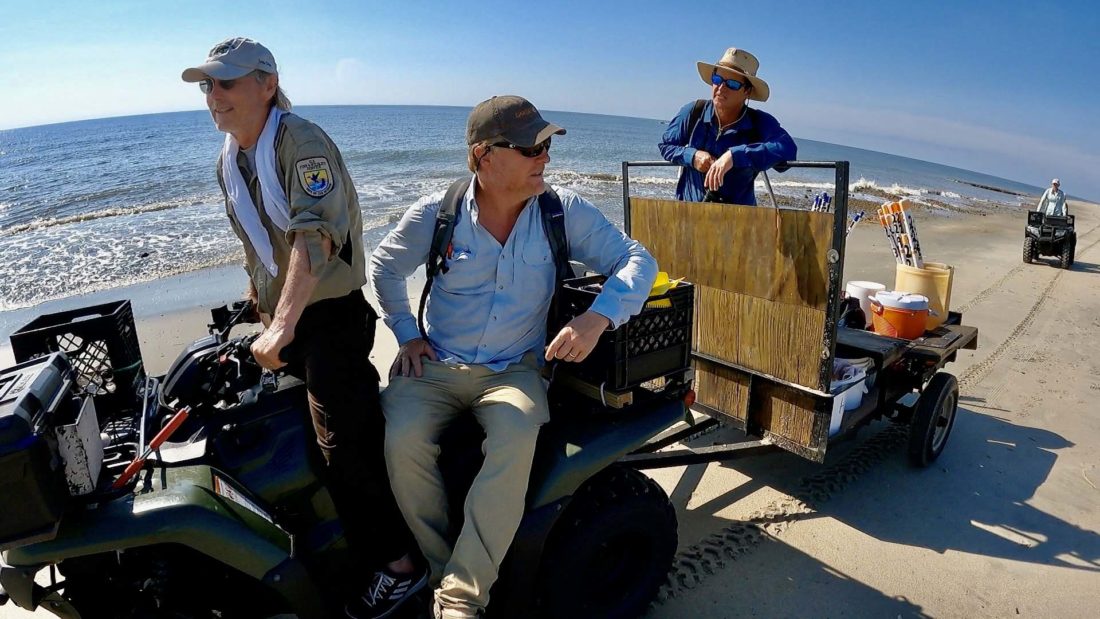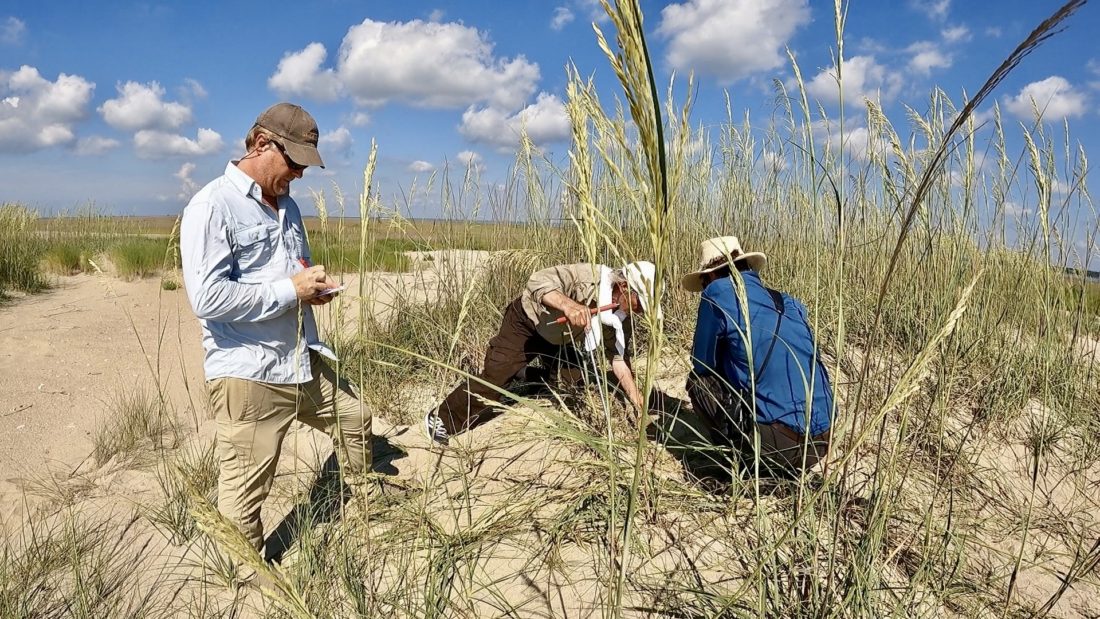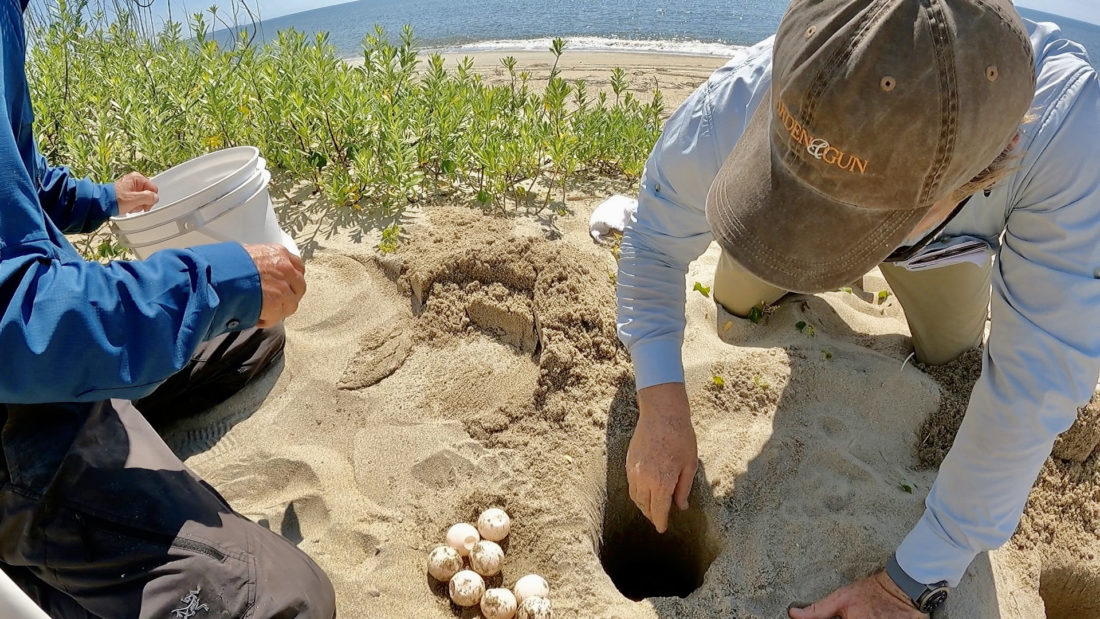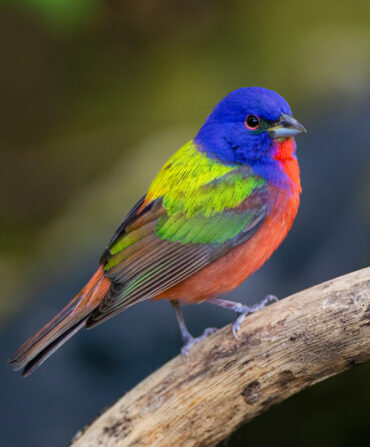Early one morning last June, during the height of loggerhead turtle nesting season, I hopped aboard a boat in McClellanville, South Carolina, with Captain Chris Crolley. We were destined for Cape Island, one of four undeveloped barrier islands that are part of the 66,000-acre Cape Romain National Wildlife Refuge. It’s a twenty-minute run through a labyrinth of tidal creeks that Crolley knows well, but it’s not always an easy one. Locals like to joke that even God has trouble getting there at dead low tide.
Our plan was to rendezvous with the turtle team, led by U.S. Fish & Wildlife Service biologist Jerry Tupacz, as they made their way along the beach. When we arrived on the island, we didn’t have to look far to see numerous tracks, called crawls, left by turtles that had heaved their bodies toward a hopeful nesting area the previous night and then back out to sea under the cover of darkness.

Crolley, who runs the Charleston-based adventure outfit Coastal Expeditions, took a knee at the nearest crawl and let a handful of sand sift through his fingers. “We’re standing on the summit,” he said, explaining that this sand was composed of feldspar, mica, and quartz, minerals that made up the granite tops of the Appalachian Mountains when they stood taller than any on earth hundreds of millions of years ago, since eroded and washed to the coast by rivers.
When it comes to the Cape Romain beaches, we were also standing on the top-producing loggerhead nesting area along the entire Eastern Seaboard north of Florida. In a typical year, roughly two thousand loggerheads nest here (accounting for up to 35 percent of all nests in the state), which translates to two hundred thousand hatchlings heading out to sea in late summer and fall. That’s why Crolley and a cadre of others are so invested in keeping tabs on the activity here. The small team monitors the beaches every single day of the season. After years of federal budget cuts, Tupacz himself handles the lion’s share of the work along with two full-time technicians (whose salaries are paid by fundraising through the Coastal Expeditions Foundation) and a handful of dedicated volunteers. “This is not a place that’s easy to get to, and it’s hard to stay,” Crolley says.

Nests laid in areas deemed safe from high tides are left in place (especially great spots are dubbed Cape Hiltons), while the team carefully moves others higher up the beach. My own turn to relocate a nest under Tupacz’s watchful eye came with nest number 201. More than a bit hesitant, I knelt over the eggs, remembering to lift each one “like a crane” so as not to unsettle the yolk. “You’ll be fine,” Tupacz said. “Just use your maturtle instincts.”
The hatchlings from 201 probably clambered from their relocated nest around mid-August in the dark of night. The odds of survival aren’t great. “Their predators are anything that has a big enough mouth to swallow them,” Crolley says. But if a female makes it, she’ll be back to nest on this beach in thirty years. “They give us a promise package,” he says. “But the real question is, Where will we be when she returns?”
Given the threats from rising sea levels, no one can be sure what Cape Romain will look like three decades from now. Turtle conservation is not a short-term endeavor. But the work that Tupacz, Crolley, and others are doing will give the next generation of loggerheads a fighting chance.
To donate to the Coastal Expeditions Foundation, go to coastalexpeditions.com/foundation.









